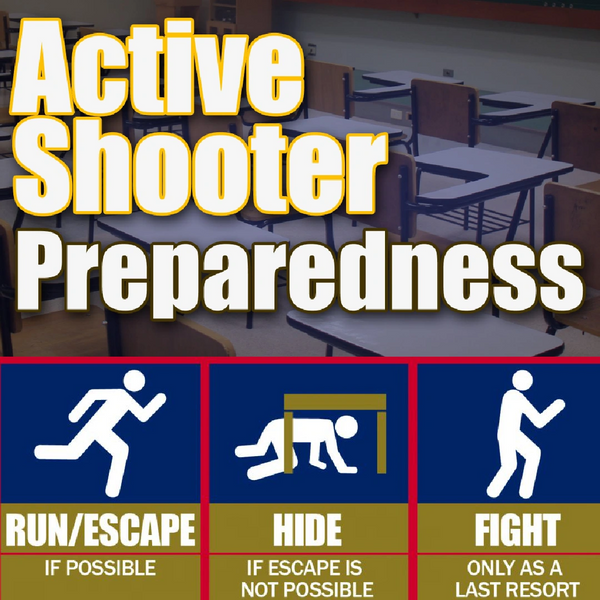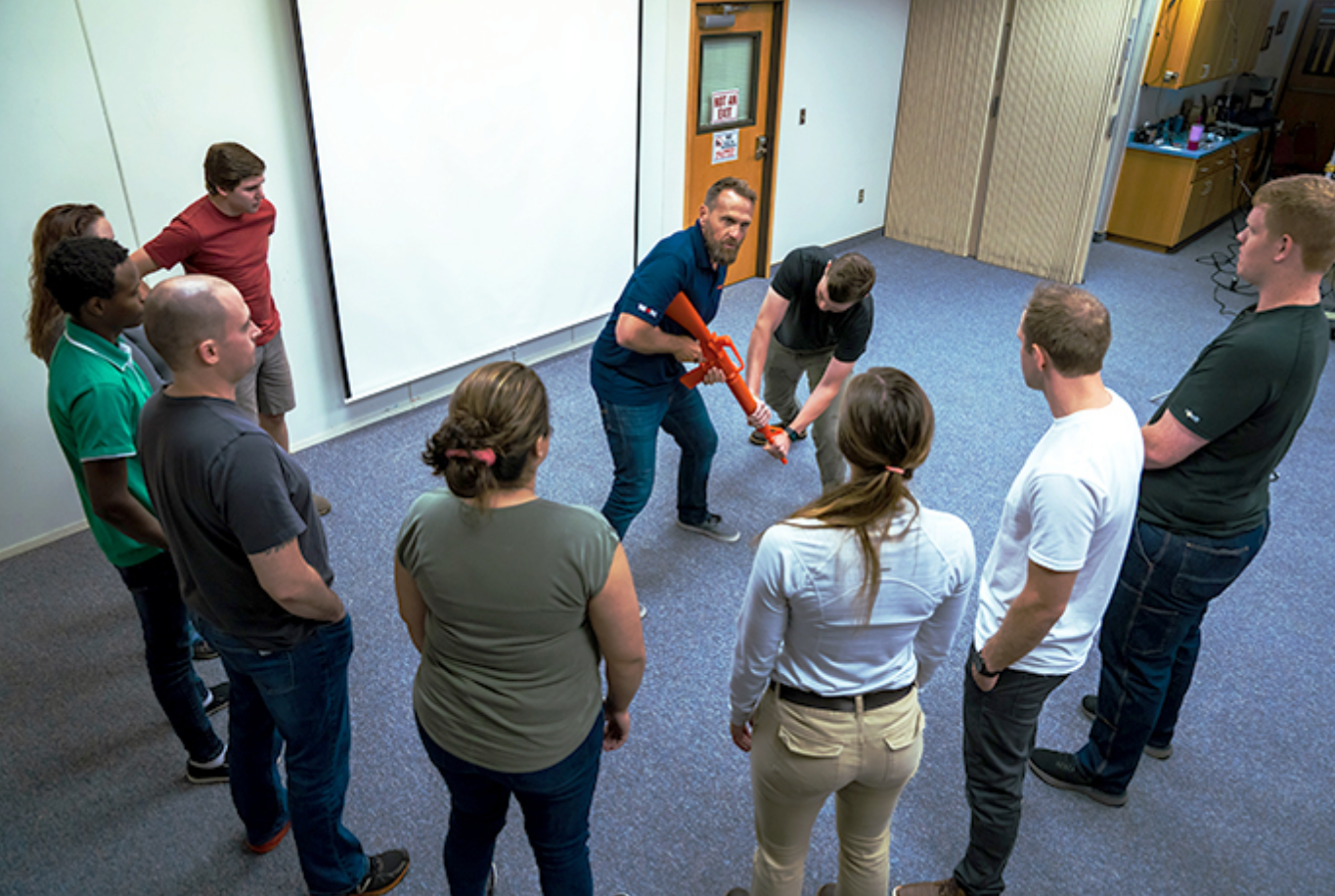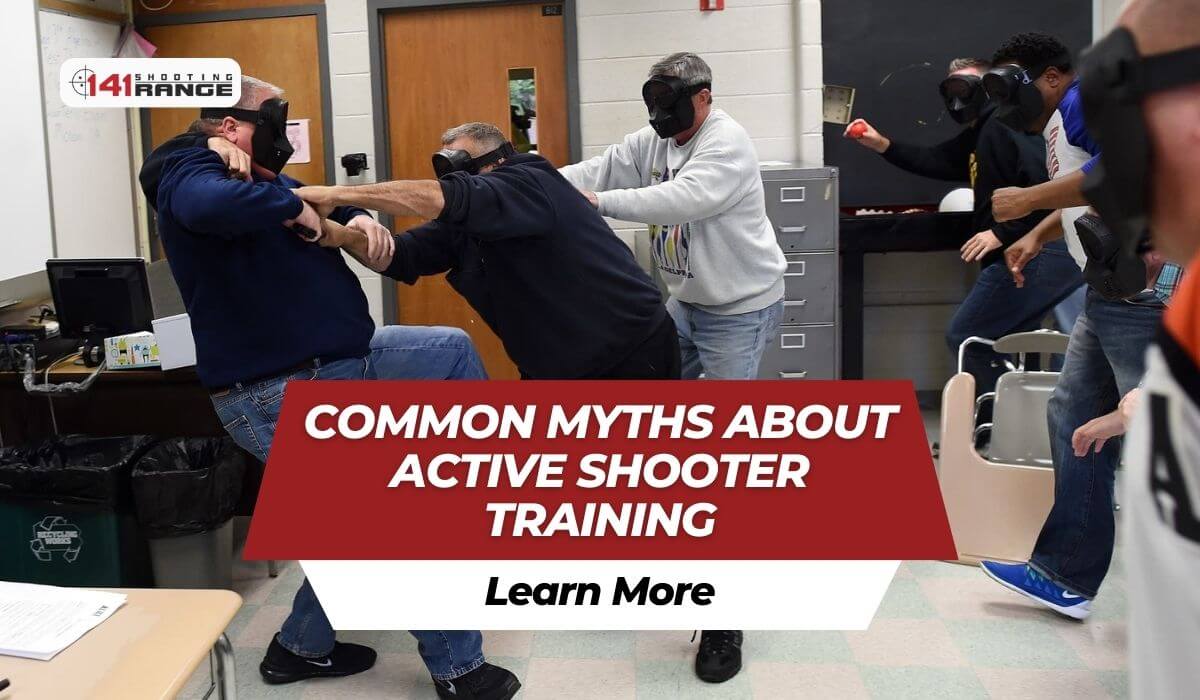Comprehensive Active Shooter Training Programs for Schools and Offices
Comprehensive Active Shooter Training Programs for Schools and Offices
Blog Article
Executing Active Shooter Training: Ideal Practices for Producing a Safe and Prepared Community Setting
As areas challenge the distressing reality of energetic shooter events, the application of thorough training programs comes to be important. An effective method rests on not only the advancement of customized curricula that address local threats yet additionally the involvement of diverse stakeholders. By utilizing a range of training techniques, communities can make sure that all members are equipped with vital skills. The difficulty lies in keeping a flexible framework that progresses with arising hazards. What are the crucial elements that can change a common training program right into a robust version for area strength?

Understanding the Requirement for Training
In an age marked by boosting incidents of violence in public rooms, understanding the demand for energetic shooter training has never been more crucial. Extensive training efforts can gear up participants with the knowledge and skills to react decisively.
In addition, the emotional influence of violence on individuals and communities can not be overemphasized. Training promotes a sense of empowerment and preparedness, enabling people to really feel even more secure in their surroundings. It also promotes a society of security, where recognition and watchfulness become essential elements of everyday life. The benefits of active shooter training expand past prompt reaction; they consist of enhancing communication protocols and enhancing total security measures within companies.
Secret Parts of Effective Programs
Effective energetic shooter training programs integrate a number of key parts that enhance preparedness and response capabilities. First, extensive educational program development is essential, making sure that training content is relevant, evidence-based, and customized to the particular requirements of the company or community. This consists of recognizing the characteristics of energetic shooter occurrences and the emotional influence on individuals entailed.
2nd, sensible training scenarios need to be used to replicate potential scenarios, enabling participants to exercise decision-making and action techniques in a controlled setting. These drills help with muscle mass memory and build confidence amongst participants.
Third, a concentrate on interaction protocols is vital. Establishing clear lines of interaction amongst police, emergency situation responders, and participants ensures worked with reactions throughout an event. Regular updates and refresher courses help keep communication paths clear and effective.
4th, continuous assessment and responses devices must be integrated into the training program - active shooter training. Evaluating the effectiveness of training with participant comments and efficiency metrics enables continuous improvement
Lastly, fostering a society of safety and security and preparedness within the community encourages caution and positive measures, making sure that people are not just trained however likewise involved in keeping a secure environment.
Engaging Community Stakeholders

To properly engage these stakeholders, it is important to connect the purposes and advantages of the training. Hosting informational sessions can aid clarify the training's purpose, address concerns, and describe the roles each stakeholder may play. Creating a stakeholder consultatory board can help with recurring dialogue, enabling for diverse viewpoints and insights to be incorporated right into the training program.
Structure partnerships with area leaders and organizations is likewise crucial. Their assistance can boost outreach initiatives, boost engagement, and ensure that training is customized to the distinct demands of the community. Additionally, stakeholders can help in disseminating information and resources, enhancing the message of safety and security and readiness.
Inevitably, involving community stakeholders not only enhances the training initiative but likewise cultivates a sense of ownership amongst homeowners, bring about a much more resistant and informed neighborhood with the ability of reacting properly to prospective hazards.
Educating Delivery Techniques
Making use of a variety of training shipment techniques is necessary to fit the diverse discovering designs and demands of participants in active shooter training programs (active shooter training). Efficient training can take a number of forms, consisting of talks, hands-on simulations, online components, and interactive workshops. Each approach offers a distinct objective and weblink can improve the total understanding experience

On the internet modules use versatility and access, enabling participants to learn at their very own pace. These can include videos, quizzes, and conversations to determine understanding. Interactive workshops encourage seminar and problem-solving, advertising team effort and interaction abilities.
Integrating a blended strategy that combines these approaches not just enhances the training experience however likewise ensures that participants are better prepared to react properly in case of an active shooter situation (active shooter training). By addressing different discovering choices, organizations can create an extra informed and receptive area
Continual Examination and Improvement
Normal analysis and enhancement of active shooter training programs are important to keeping their importance and effectiveness. As hazards advance, so must the techniques and techniques employed in training. Constant examination makes certain that training web content reflects the most up to date knowledge on energetic shooter cases, including lessons gained from recent occasions and adjusting for arising patterns.
To promote this process, companies must establish feedback devices that consist of participant examinations, professional reviews, and case debriefs. Gathering information on participant efficiency during drills and workouts is essential, as it highlights areas requiring improvement and notifies future training sessions. In addition, engaging with police and emergency -responders can offer beneficial understandings into the practicality and applicability of training procedures.
Frequently scheduled evaluations of training materials and methods should be mandated, cultivating an atmosphere of innovation and flexibility. Organizations has to also encourage a culture of continuous discovering, where staff participants feel equipped to suggest changes based on their experiences. By dedicating to constant examination and improvement, companies not only improve the efficiency of their active shooter training programs yet additionally enhance their general dedication to safety and preparedness within the neighborhood.
Verdict
To conclude, efficient application of active shooter training necessitates a detailed strategy that focuses on neighborhood engagement and sensible simulations. By developing customized educational programs, incorporating varied training approaches, and cultivating cooperation among stakeholders, communities can enhance preparedness. Continuous examination and responses systems are important for adapting programs to emerging hazards, consequently strengthening total safety. Inevitably, a commitment to continuous training and renovation grows a culture of watchfulness and readiness, guaranteeing a more secure environment for all area members.
Report this page